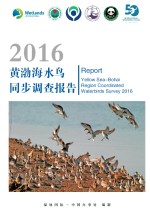
The Yellow Sea, a site of global importance for migratory birds
-
International Waterbird Census
-
Species
In April 2016 as part of the 50th anniversary of the International Waterbird Census a survey of the Yellow Sea-Bohai Sea region’s waterbirds and wetlands was conducted. The survey covered 18 major sites along an area stretching 6500 km from Shanghai to the Yalu River estuary in the northeast (adjoining North Korea). A total of nearly 807,000 waterbirds of 119 species, including three Critically Endangered species – Baer’s Pochard, Siberian Crane and Spoon-billed Sandpiper – were recorded.

The Yellow Sea-Bohai Sea wetlands are amongst the most important stopover sites in the world for migratory waterbirds during their northward and southward migrations along the East Asian-Australasian Flyway. These coastal wetlands are also fundamental for shorebirds of the flyway, especially as the northern coast of the Yellow Sea is the last stopover site for many species of shorebirds before they get to their Arctic breeding grounds.
However, as other recent studies have shown the region is facing problems including severe degradation and loss of wetlands due to rapid economic development across the region. This is resulting in loss of migratory waterbird habitats and the loss of safe feeding and roosting areas for birds.
Protecting wetlands and their biodiversity in the Yellow Sea-Bohai Sea region will be crucial for meeting China’s social and environmental priorities.
Eight of the survey sites meet the criteria of Wetlands of International Importance in accordance with the Ramsar Convention as they held over 20,000 waterbirds. Of the three unprotected areas surveyed, Rudong and Ningbo Hangzhou Bay also held around 20,000 waterbirds and would qualify as Wetlands of International Importance. These results reinforce the global importance of the Yellow Sea-Bohai Sea wetlands for migratory waterbirds.
The survey was conducted by Wetlands International China, together with the China Wildlife Conservation Association, the Northeast Institute of Geography and Agricultural Ecology and the Beijing Biodiversity Conservation and Research Center. The survey was supported by the Ministry of the Environmental Protection of China and altogether over 150 volunteers and waterbird experts took part. This is the first survey of its kind to be conducted by government wetland reserve management agencies in cooperation with other stakeholders.
 For more information visit the Wetlands International China website and download the full report. The report is only available in Chinese with a summary in English.
For more information visit the Wetlands International China website and download the full report. The report is only available in Chinese with a summary in English.
Header image © Chris Schenk
